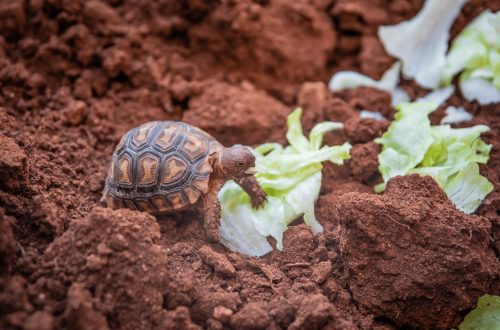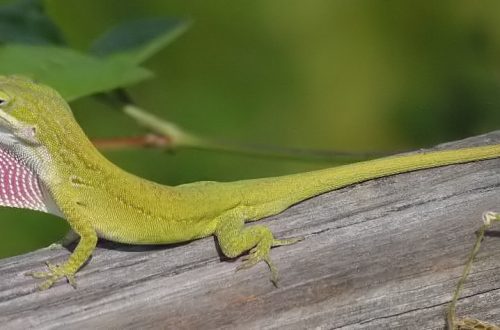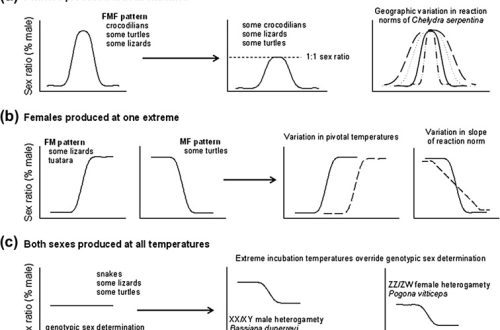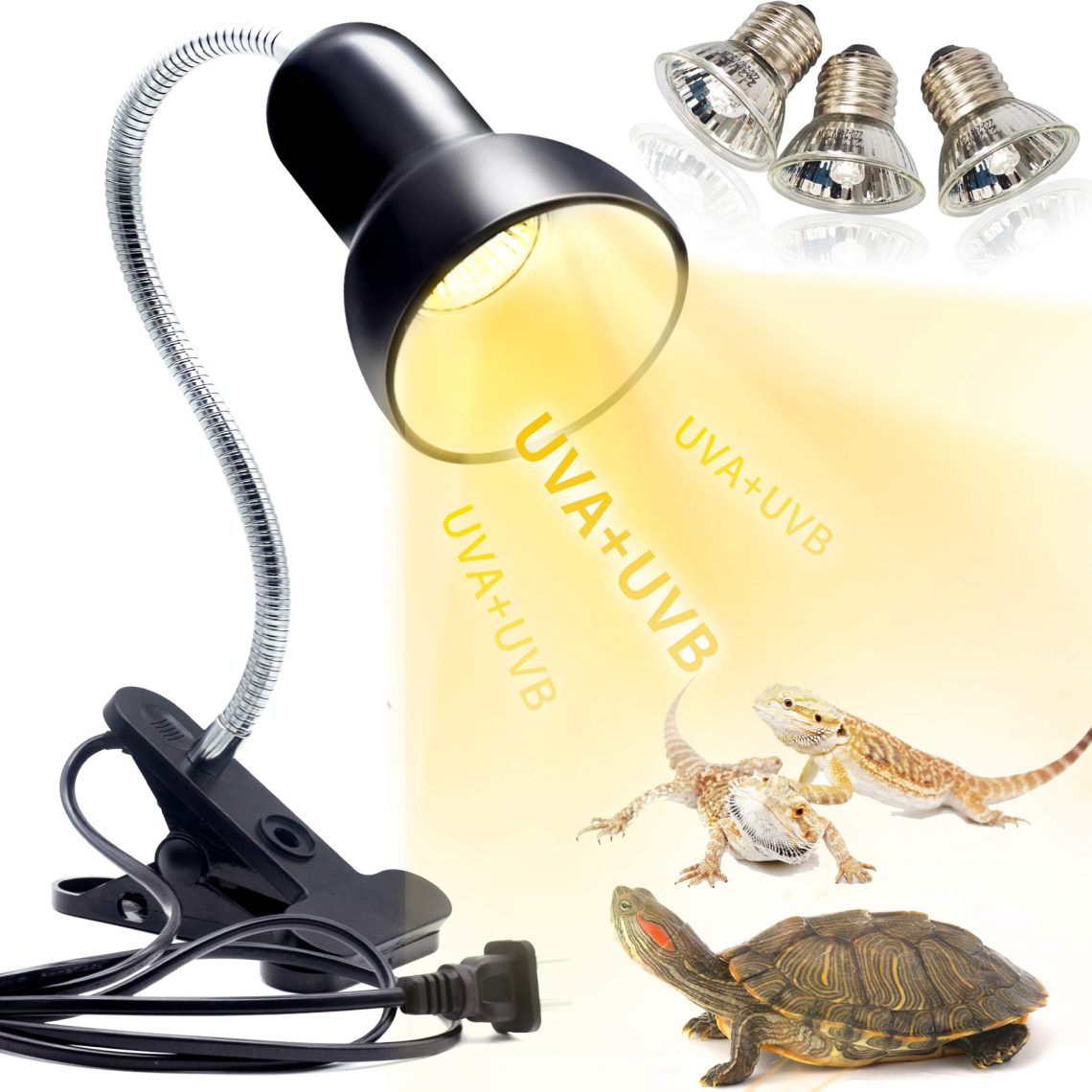
Heating lamps – all about turtles and for turtles

Turtles are cold-blooded animals, which means that all processes in their bodies depend on the ambient temperature. To maintain the temperature at the required level in one corner of the terrarium, you need to install a heating lamp for turtles (this will be a “warm corner”). Typically, a heating lamp is placed at a distance of about 20-30 cm from the turtle shell. The temperature under the lamp should be approximately 30-32°C. If the temperature is higher than indicated, then it is necessary to put a lamp of lower power (less than watts), if lower – more power. If at night the temperature in the apartment drops below 20°C at night, it is recommended to install infrared or ceramic lamps that do not give bright light (or do not give light at all), but warm the air.
You can buy an ordinary or mirror incandescent lamp at any supermarket or hardware store. A night lamp or infrared lamp is sold in the terrarium departments of pet stores (a cheaper option is AliExpress).
The power of the heating lamp is usually selected 40-60 W, it must be turned on for the whole daylight hours (8-10 hours) from morning to evening. At night, the lamp must be turned off, as turtles are diurnal and sleep at night.
Turtles love to bask and sunbathe under the lamp. Therefore, the lamp must be strengthened for aquatic turtles above the shore, and for land turtles in the corner opposite to the location of the shelter (house) of the turtle. This is important for obtaining a temperature gradient. Then in the warm zone under the lamp the temperature will be 30-33 C, and in the opposite corner (in the “cold corner”) – 25-27 C. Thus, the turtle will be able to choose the desired temperature for itself.
The lamp can be built into the lid of the terrarium or aquarium, or it can be attached to a special clothespin-plafond to the edge of the aquarium.
Heating lamp types:
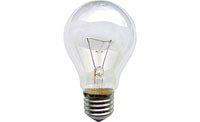 | Incandescent lamp – the usual “Ilyich’s light bulb”, which is sold in hardware stores, for small and medium-sized terrariums (aquariums) they purchase lamps of 40-60 W, for large ones – 75 W or more. Such lamps are quite cheap and therefore are most often used to heat the turtle during the day. |
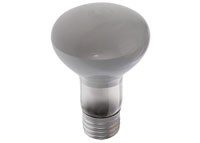 | Mirror (directional) lamp – part of the surface of this lamp has a mirror coating, which allows you to get a directional distribution of light, in other words, this bulb heats strictly at one point and does not dissipate heat like a conventional incandescent lamp. Therefore, a mirror lamp for turtles should be of less power than an incandescent lamp (usually from 20 watts). |
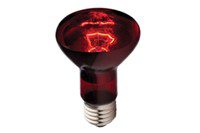 | Infrared lamp – a special terrarium lamp, which is used mainly for night heating, when the temperature in the room drops below 20 ° C. Such lamps give little light (red light), but heat well. Exoterra Heat Glo Infared 50, 75 and 100W JBL ReptilRed 40, 60 and 100 W Namiba Terra Infared Sun Spot 60 и 120 Вт |
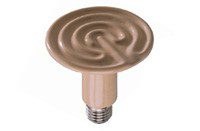 | ceramic lamp – this lamp is also designed for night heating, it heats up quite strongly and does not give visible light. Such a lamp is convenient because it cannot explode when water hits it. It is convenient to use a ceramic lamp in aquariums or forest-type terrariums with high humidity. Exoterra Heat Wave Lamp 40, 60, 100, 150, 250 Вт Reptizoo 50, 100, 200W JBL ReptilHeat 100 and 150W |
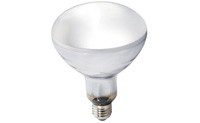 | Discharge mercury lamps for turtles, they have visible light and are quite warm, in addition, they last longer than ordinary incandescent lamps. A mercury self-regulating choke lamp contains both a high percentage of UVB and provides good heating. These lamps last longer than just UV – up to 18 months or longer. Exoterra Solar Glo |
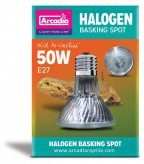 | Halogen lamp – an incandescent lamp, in the cylinder of which a buffer gas is added: halogen vapors (bromine or iodine). Buffer gas increases lamp life to 2000-4000 hours and allows higher filament temperature. At the same time, the operating temperature of the spiral is approximately 3000 K. The effective light output of most mass-produced halogen lamps for 2012 is from 15 to 22 lm / W. Halogen lamps also include neodymium lamps, which are protected from splashes, emit ultraviolet A spectrum (animals under it are brighter and more active), and infrared heating rays. ReptiZoo Neodymium Daylight Spot Lamps, JBL ReptilSpot HaloDym, Reptile One Neodymium Halogen |
In addition to a heating lamp, the terrarium must have ultraviolet lamp for reptiles. If you cannot find an ultraviolet lamp in pet stores in your city, you can order it with delivery from another city where there are online pet stores with delivery, for example, from Moscow.
Ordinary (fluorescent, energy-saving, LED, blue) lamps do not give turtles anything other than the light that an incandescent lamp will give anyway, so you don’t need to buy and install them specially.
A few tips for terrarium lighting:
1) The terrarium should have different temperature and light zones so that the pet can choose the optimal temperature and light level for him.
2) It is necessary to provide different light spectra, coupled with thermal radiation, since the absorption of ultraviolet radiation and the synthesis of vitamin D3 occurs only in warmed reptiles.
3) It is very important to make the lighting from above, as in the wild, because in addition to the fact that the side rays can irritate the eyes and unnerve the animal, they will not be caught by the third eye, which is actively involved in the process of receiving light by the reptile.
4) Install the lamps at the height recommended by the manufacturer. Measure the temperature under the heat lamps at the level of your pet’s back and not at the floor level, as there it is several degrees higher than at ground level. This remark is especially true for turtle owners.
5) The zone of heating and illumination should cover the entire pet, since point irradiation of individual parts of the body can lead to burns. The fact is that the reptile does not warm up completely and lies under the lamp for a very long time, while individual points are already overheated.
6) The photoperiod is very important for all organisms. Set a specific time to turn on and off the light. And try to bring down the rhythms of day and night. If heating is required at night, then use heating elements that do not emit light (infrared emitters, heating mats or cords).
Fear of short circuit and fire
Many people are afraid to leave the lamps on when leaving home. How to protect yourself and your home?
- The apartment must have good wiring. If so, then there is nothing to worry about, if bad, then see below. If you are not sure or do not know what kind of wiring is in the house, it is worth calling an electrician to check both the wiring and sockets. If you are going to change the wiring, then you should use wires that, in the event of a short circuit, are self-extinguishing.
- Lampholders for heating lamps must be ceramic, and the bulbs must be well screwed in, not dangling.
- In summer, in the heat, incandescent lamps can be completely turned off, but UV lamps must be turned on.
- High-quality extension cords from outlets (if the outlets are checked and they are normal) will help to avoid unnecessary fires.
- Install a webcam at home and check whether everything is in order via the Internet.
- It is better not to place hay directly under the lamp.
- If possible, use a voltage stabilizer.
- The lamps must not be exposed to water when bathing the turtle or spraying the terrarium.
How to make the lamps turn on and off automatically?
In order for the light of the reptiles to turn on automatically, you can use a mechanical (cheaper) or electronic (more expensive) timer. Timers are sold at hardware and pet stores. The timer is set to turn on the lamps in the morning and turn off the lamps in the evening.
- Video:
© 2005 — 2022 Turtles.ru



